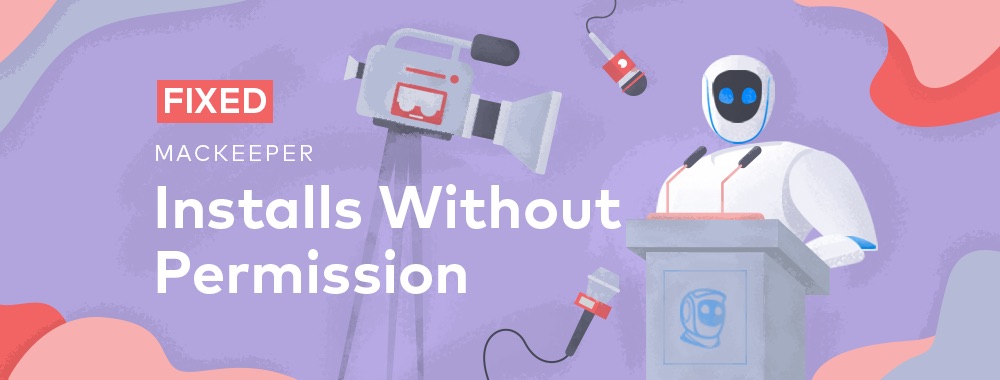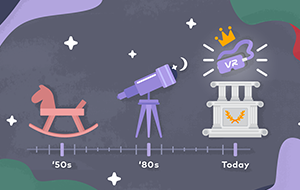In this article you will find the following:
Since we know MacKeeper can be uninstalled just as easily as any other software, we needed to find out why people blame MacKeeper for getting installed without their permission and what made them think it was hard to remove MacKeeper from their Macs.
So we decided to find the root cause of the problem.
After a few weeks of thorough investigation, we realized where all those "MacKeeper is not a safe program" and "MacKeeper malware" complaints were coming from. The issue had a lot to do with bundling — a distribution tool we previously relied on heavily.
Here's how we found this out.
There were no complaints from people who downloaded MacKeeper from our official website or landing page. For them, the download-and-installation process was clear and seamless, and so was the process of uninstall.
Most of people who did have complaints about MacKeeper, however, had never been to our website or landing page. They got MacKeeper as a result of downloading a bundle of software with MacKeeper as a component.
So what looked like installation without their permission was a result of our software being downloaded as a part of a bundle. To make matters worse, the people responsible for managing that bundle failed to properly inform users about what pieces of software were coming in the package.
Wondering what "bundle" means? Here's a short explanation. Bundling is about offering several products or services for sale as a package. This means that you can buy or download for free one major software you're actually interested in and get other software for free. Sometimes this can be convenient and a great deal.
The problem is that some bundling companies don't use it the right, honest way. "The right way" here means making it clear for people what software will end up installed on their computers apart from the one they wanted in the first place.
When there is no clear and easy-to-notice message informing people about that, should we be surprised people perceive additional software as a virus?
Here's how problematic bundling works in real life.
Let's say you need a photo editor. You google a free software to help you out, find one, and click "download." Once an installation starts, you see a few screens asking you to agree/confirm/accept standard things such as EULA (end-user license agreement), which you skim over quickly. You need your photo editor, and you need it ASAP. Soon you notice a strange software on your computer, and you're sure you never installed it. "It must be a virus!" you think. In reality, though, it's just a software that you didn’t realize you confirmed to be installed.
It's not your fault. In all likelihood, the message notifying you that these additional apps were being installed was not clear in order to trick you into installing. Misleading messages and tricky UX are to blame. That's an approach we never use on our official website or landing pages but one some of our former, lower-quality partners relied on.
What Did It Mean for You As User?
1. The illusion of MacKeeper being installed without your permission
Since we used to rely on a bundle distribution quite heavily, it's likely that at some point you found MacKeeper installed on your computer without your conscious permission. "Conscious" being the operative word here since you most certainly did agree for it to be installed. Our partners opted for design and copy of that "agree" or "allow" window that “tricked” you into allowing it. Unfortunately, we could not control these aspects of our partners’ bundles. We’re sorry that these partnerships allowed something like that happened in the first place.
We have paid the price and taken measures to detect all slippery partners who failed to execute bundling the right, honest way.
2. Problems with removing MacKeeper from your Mac
As we said before, the MacKeeper uninstallation process is no different from any other software. All you need to do is to move the MacKeeper application file to trash with drag-and-drop. Chances are some leftover files will still remain on your computer (this is normal for any software). If that's the case, using software such as Malwarebytes to clean leftovers will most certainly help.
What can make MacKeeper seem difficult to uninstall is the fact that it's been installed on your Mac in a bundle more than once. This means that you removed it and cleaned leftovers but some time later you downloaded another bundle it was a part of, making you think you never actually uninstalled it successfully.
What Have We Done to Fix It?
First and foremost, we realized that we need more control over the bundling distribution we were involved in. We hired a company specialized in scam detection to help us collect all cases of slippery bundling and stop them.
Also, we asked our support team to collect and report on all complaints we get directly from users. We have done this just to make sure no case of "unhealthy" bundling will remain unnoticed.
We took measures to stop being distributed in bundles owned by shady partners who relied on unethical tactics — lots of unhealthy partnerships were terminated.
Last but not least, we made it a part of our mission to educate people on the importance of downloading software from official, trusted sources.
The Final Takeaway
As a team working hard on improving our product, communication, and distribution, we take it hard each time we hear people saying that Mackeeper is a virus or a malware. That's why we have reconsidered our approach to distribution — to make sure that earlier misunderstandings are cleared and that they will not happen moving forward.








